|
#1
| |||
| |||
|
Can you provide me the GATE for Computer Science and Information Technology Previous 10 years solved papers???
|
|
#2
| |||
| |||
|
This is the GATE for Computer Science and Information Technology Previous 10 years solved paper: 1.19. Which of the following derivations does a top-down parser use while parsing an input string? The input is assumed to be scanned in left to right order. (a) Leftmost derivation (b) Leftmost derivation traced out in reverse (c) Rightmost derivation (d) Rightmost derivation traced out in reverse 1.20. Which of the following need not necessarily be saved on a context switch between processes? (a) General purpose registers (b) Translation look-aside buffer (c) Program counter (d) All of the above 1.21. Let m[0]…m[4] be mutexes (binary semaphores) and P[0] …. P[4] be processes. Suppose each process P[i] executes the following: wait (m[i];wait (m[(i+1) mode 4]); ……… release (m[i]); release (m[(i+1)mod 4]); This could cause (a) Thrashing (b) Deadlock (c) Starvation, but not deadlock (d) None of the above 1.22. B+ -trees are preferred to binary trees in databases because (a) Disk capacities are greater than memory capacities (b) Disk access is much slower than memory access (c) Disk data transfer rates are much less than memory data transfer rates (d) Disks are more reliable than memory 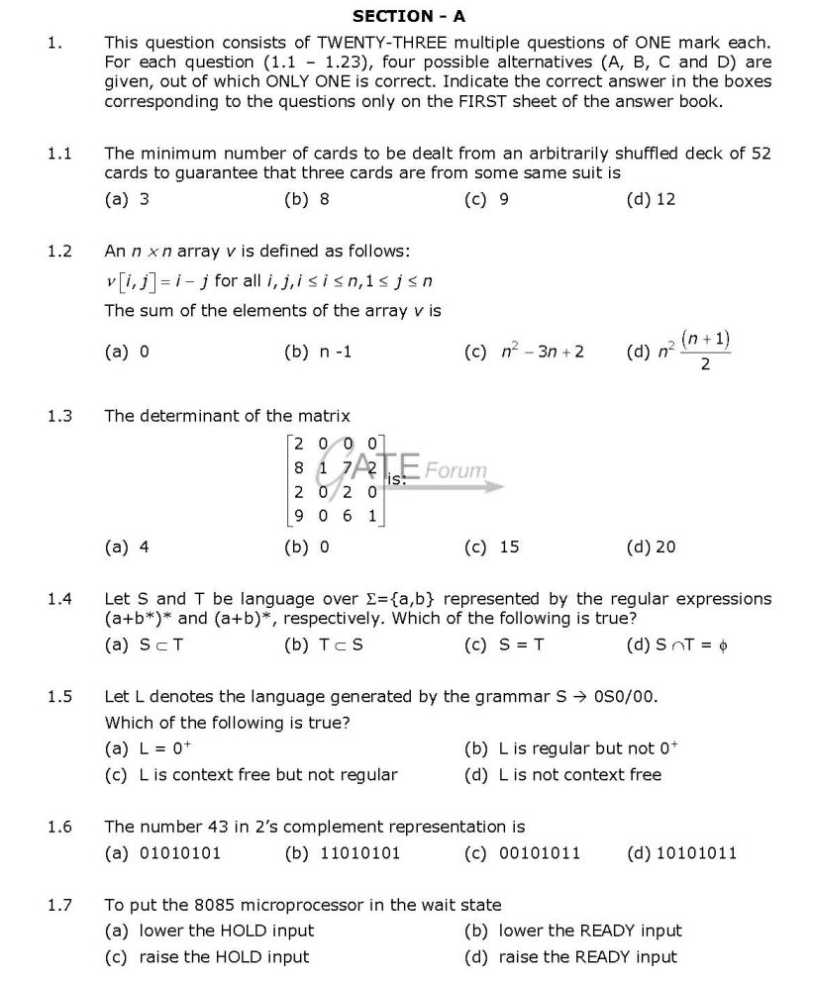 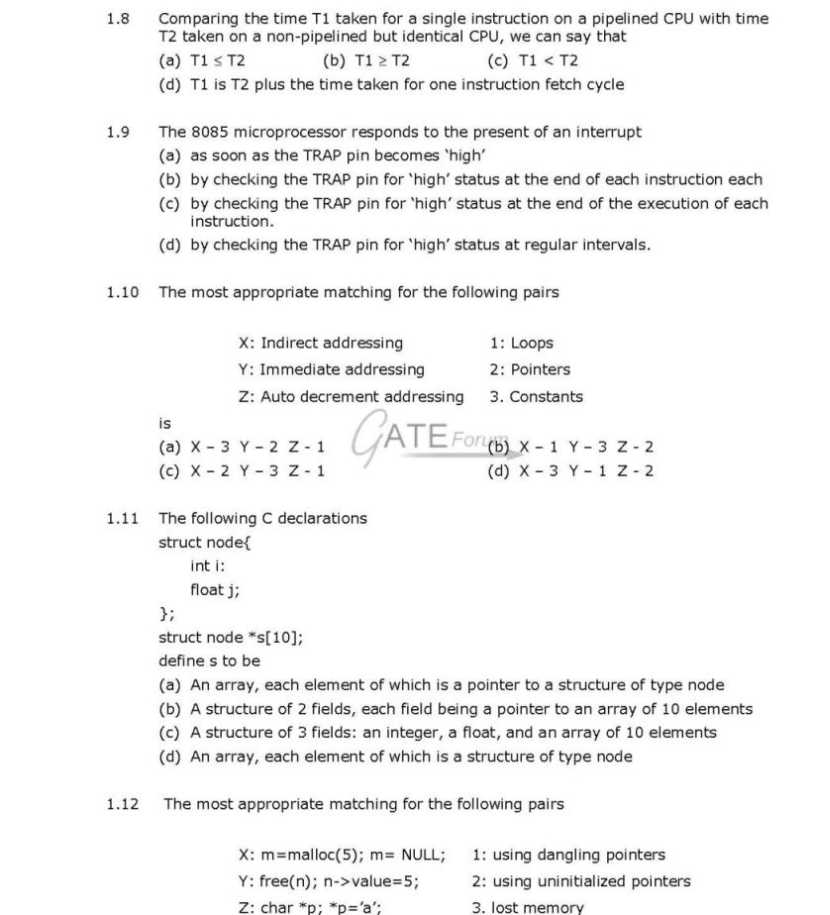 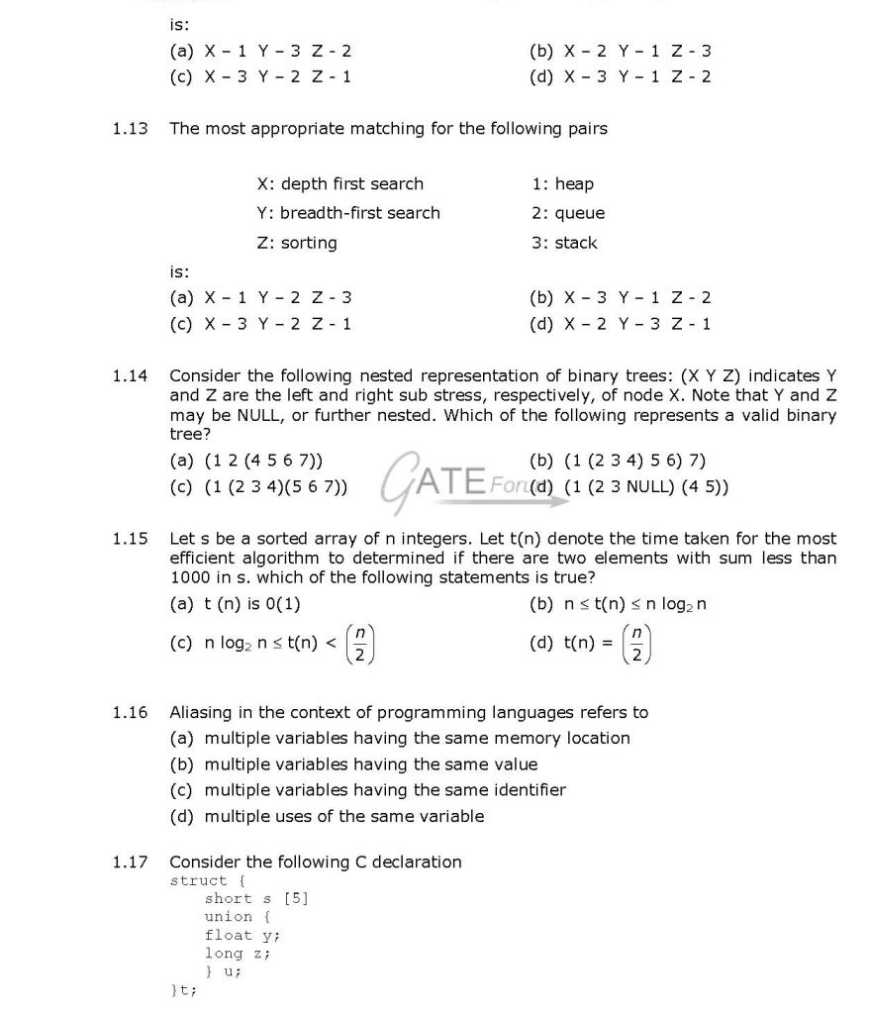 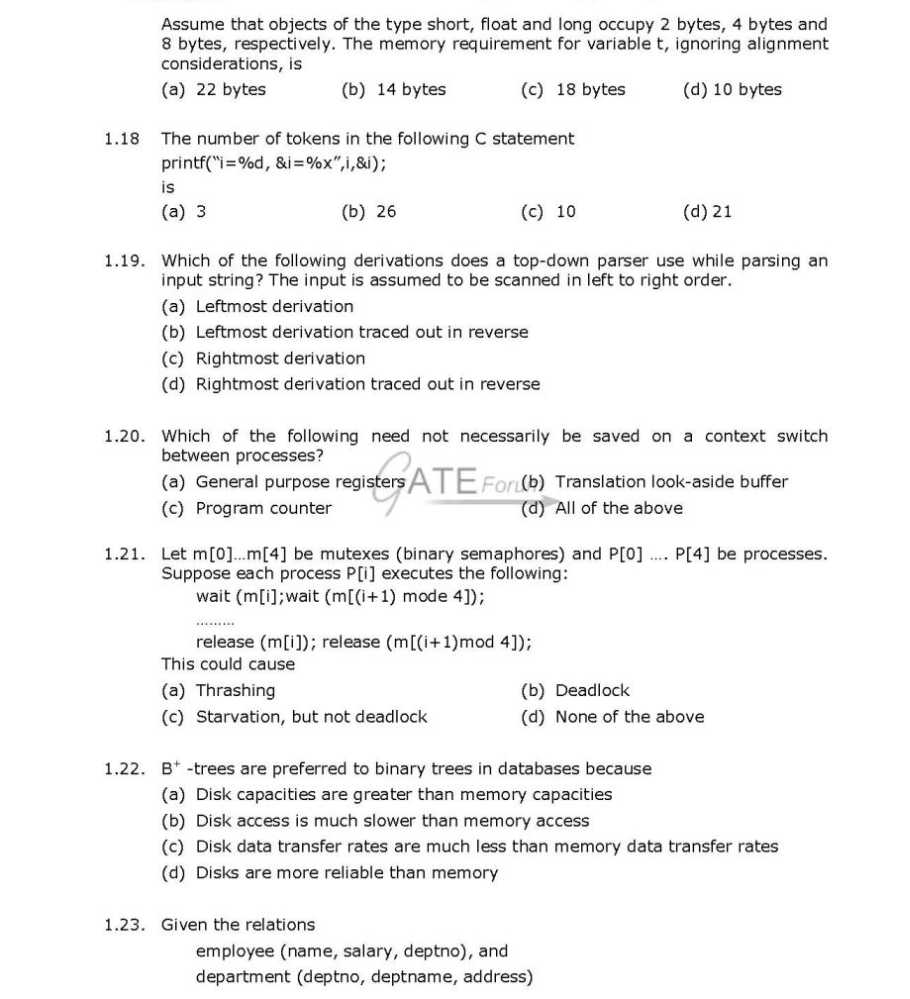 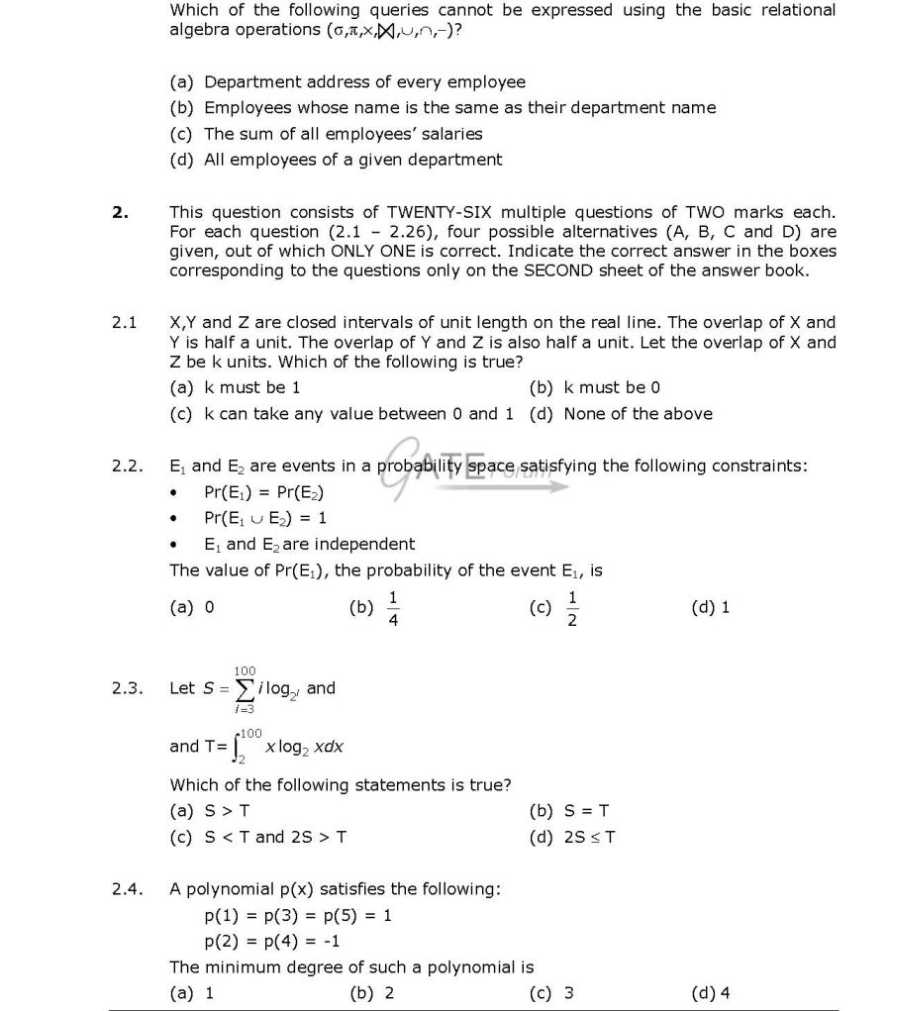 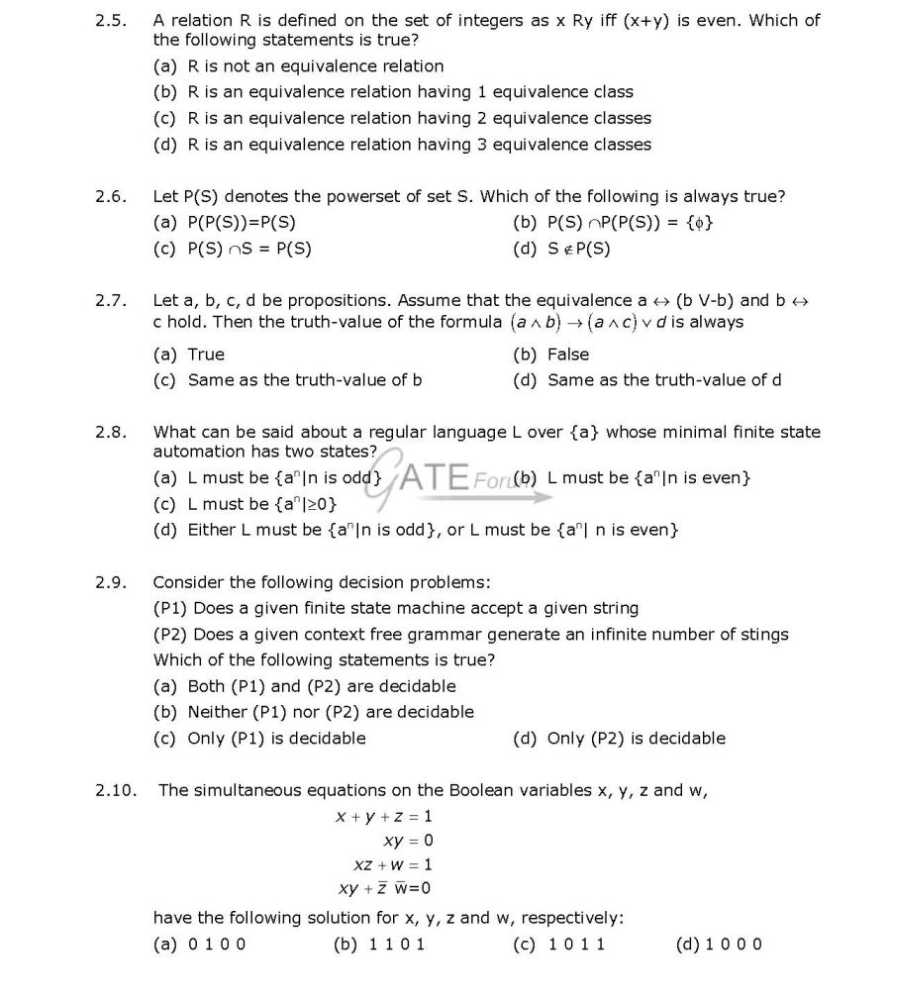 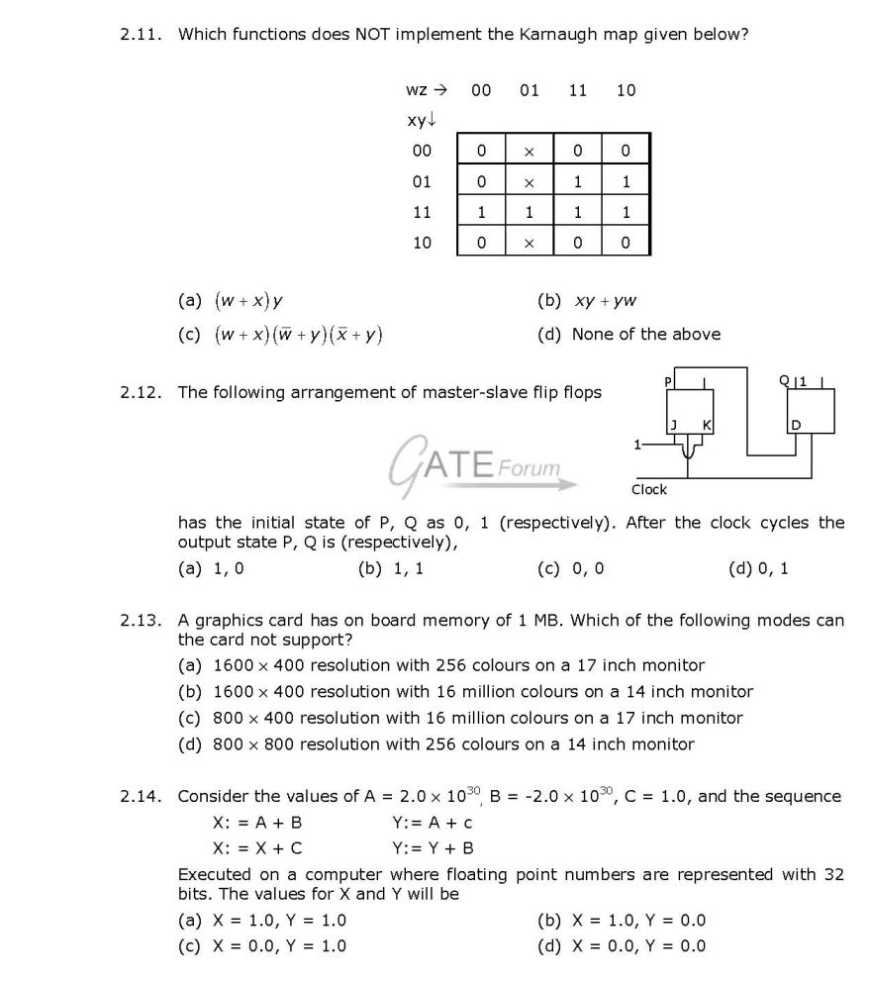 Rests of the questions are in the attachment, please click on it………..
__________________ Answered By StudyChaCha Member |
|
#4
| |||
| |||
|
As you want to get the Graduate Aptitude Test in Engineering previous year question papers of Computer Science and Information Technology so here is the information of the same for you:     For more detailed information I am uploading 2 PDF files which are free to download: Syllabus of Computer Science and Information Technology: Section1: Engineering Mathematics Discrete Mathematics: Propositional and first order logic. Sets, relations, functions, partial orders and lattices. Groups. Graphs: connectivity, matching, coloring. Combinatorics: Counting, recurrence relations, generating functions. Linear Algebra: Matrices, determinants, system of linear equations, eigenvalues and eigenvectors, LU decomposition. Calculus: Limits, continuity and differentiability. Maxima and minima. Mean value theorem. Integration. Probability: Random variables. Uniform, normal, exponential, poisson and binomial distributions. Mean, median, mode and standard deviation. Conditional probability and Bayes theorem. Computer Science and Information Technology Section 2: Digital Logic Boolean algebra. Combinational and sequential circuits. Minimization. Number representations and computer arithmetic (fixed and floating point). Section 3: Computer Organization and Architecture Machine instructions and addressing modes. ALU, data‐path and control unit. Instruction pipelining. Memory hierarchy: cache, main memory and secondary storage; I/O interface (interrupt and DMA mode). Section 4: Programming and Data Structures Programming in C. Recursion. Arrays, stacks, queues, linked lists, trees, binary search trees, binary heaps, graphs. Section 5: Algorithms Searching, sorting, hashing. Asymptotic worst case time and space complexity. Algorithm design techniques: greedy, dynamic programming and divide‐and‐conquer. Graph search, minimum spanning trees, shortest paths. Section 6: Theory of Computation Regular expressions and finite automata. Context-free grammars and push-down automata. Regular and contex-free languages, pumping lemma. Turing machines and undecidability. Section 7: Compiler Design Lexical analysis, parsing, syntax-directed translation. Runtime environments. Intermediate code generation. Section 8: Operating System Processes, threads, inter‐process communication, concurrency and synchronization. Deadlock. CPU scheduling. Memory management and virtual memory. File systems. Section 9: Databases ER‐model. Relational model: relational algebra, tuple calculus, SQL. Integrity constraints, normal forms. File organization, indexing (e.g., B and B+ trees). Transactions and concurrency control. Section 10: Computer Networks Concept of layering. LAN technologies (Ethernet). Flow and error control techniques, switching. IPv4/IPv6, routers and routing algorithms (distance vector, link state). TCP/UDP and sockets, congestion control. Application layer protocols (DNS, SMTP, POP, FTP, HTTP). Basics of Wi-Fi. Network security: authentication, basics of public key and private key cryptography, digital signatures and certificates, firewalls.
__________________ Answered By StudyChaCha Member |
 |
| |